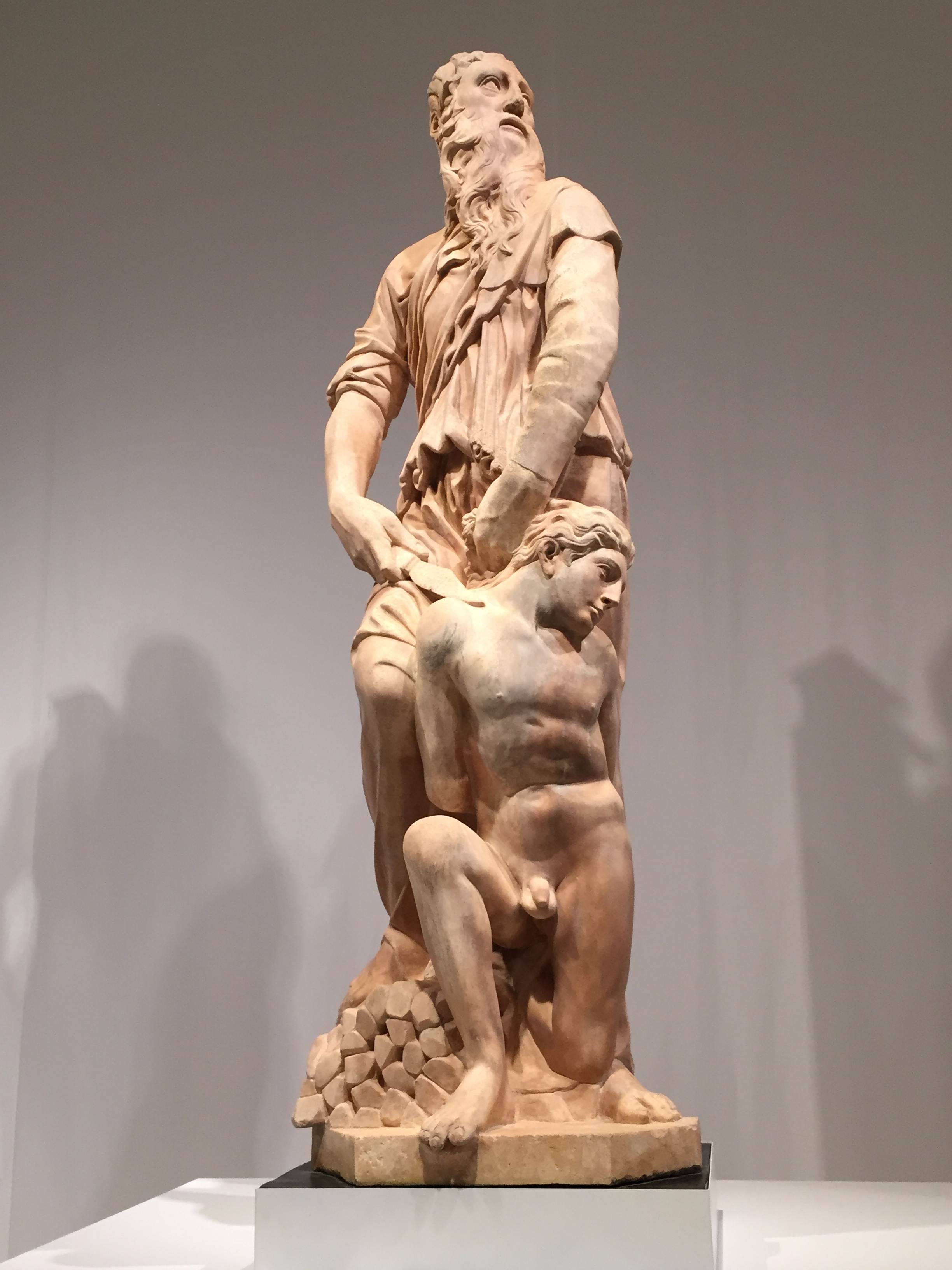Sublime is beautiful, too
On my last, too-short visit to New York City, I was lucky enough to see the astonishing Sculpture in the Age of Donatello at a museum I didn’t know existed until a couple days before my trip: the Museum of Biblical Art, near Columbus Circle. Two works in the show were so powerful that for me they fused together two qualities Edmund Burke tried hard to keep apart: the beautiful and the sublime. For him, beauty was evoked by an art of balance and order, subtlety and color. He called sublime whatever inspired awe or dread or even terror. In his own time, he would have considered Turner an artist of the sublime, with Constable working the field of beauty. Now a couple weeks after finding myself gazing speechless while looking at Donatello’s rendering of Abraham and Isaac, and his almost modernist Prophet, it struck me that the quattrocento sculptor found a way to make beauty indistinguishable from anguish, dread and spiritual abandonment. These two sculptures are humbling visions of two individuals struggling with a sense of complete alienation and loss: not simply loss in the sense of being bereft of everything others enjoy, but a spiritual losing of one’s way. These are two figures who have cut themselves adrift from every mooring, trusting only an inner imperative, even if it leads toward what nearly anyone else would consider madness.
One can think of how this works in the world’s wisdom traditions, and in Joseph Campbell, but these figures for me evoke a moral uncertainty and a conflation of violence with faith that felt thoroughly contemporary. Abraham has just been told to spare his son, after having faithfully steeled himself to sacrifice the boy—with a look of relief so helpless and dumbfounded that he appears to be the terrified child, not his own son’s stayed executioner. As I looked at the work, what I found so moving was the notion that he would carry this out against everything he believed and wanted, doing something so radically mysterious and incomprehensible, to him as well as to everyone else. It’s still difficult to understand the meaning of the story. He engages in Kierkegaard’s famous leap of faith, which was less a leap, in Abraham’s case, than a long forced march. The figures breathe with life and the rough finish gives both father and son a humble, vulnerable vitality: they breathe in a way Michelangelo’s figures a century later don’t. Except for Michelangelo’s later sculpture, the latter sculptor’s polish, balance and perfection, make his work colder, more like the Platonic idea of what he’s representing than the uncertain, fallible human beings Donatello portrays. Donatello’s Prophet seems to look down in an almost disoriented, slightly baffled way, at the viewer. (These sculptures are mounted so high, as they are in Florence where they will return in June, that the feet are close to eye level.) The prophet looks every bit the part of slightly crazed visionary, someone who has thrown off all his attachments, a monk who has returned from some long commune with a truth he isn’t even sure he wants to put into words, given the disappointing view around him. And what he’s seeing around him is nothing other than those of us who are looking up expectantly, awaiting something from him without knowing what. He reminded me immediately of Rodin’s The Burghers of Calais, which gains in power if you take a look at it again after you have seen this sculpture by Donatello.
It was such a privilege to be able to see these two sculptures and everything else in the show—which unbelievably were delivered over the Atlantic by aircraft, all those tons and tons of stone. If you have any interest in art and aren’t willing and able to fly to Florence, you should make this the first thing you see on a visit to New York City—and you can count your airfare well spent even if it’s the only thing you see there.

Comments are currently closed.